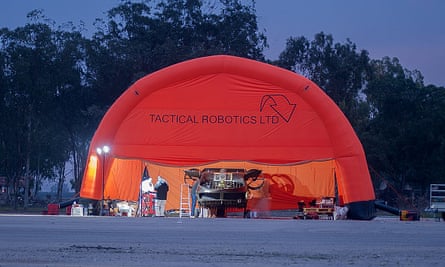A drone ambulance designed to airlift two people has taken autonomously to the air for the first time.
The AirMule, which can take off and land vertically, is designed for conditions where landing a helicopter is unfeasible – such as on a battlefield. The drone, made by Israeli company Tactical Robotics, has seen recent setbacks in development but is designed to carry up to 450kg up to 31 miles.
The single-engined, internal rotor drone took to the air from a temporary testing facility set up at the Megiddo airfield after gaining clearance from the Israeli Civil Aviation Authority for untethered flight.
The company plans to demonstrate the AirMule’s cargo-carrying capability within the year, with beyond-line-of-sight testing also scheduled.

While battlefield evacuation is an obvious implementation for the compact drone system, the ability to fly in close proximity to buildings and other obstructions because of its internal rotor system, gives it a significant edge over traditional air ambulances.
Tactical Robotics is not the only company working of people-carrying drones. The Chinese Ehang 184 passenger drone was shown off at CES in Las Vegas at the start of January, capable of carrying a single person up to 100kg in weight for up to 23 minutes at speeds of up to 63mph.
Comments (…)
Sign in or create your Guardian account to join the discussion